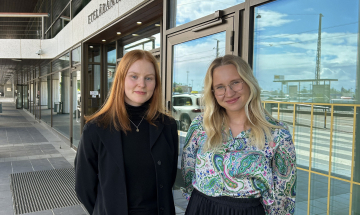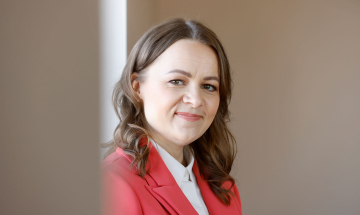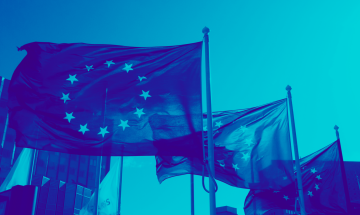Future proof and technology neutral legislation for private copying levies
I feel that blogging about legislation is a field that suffers from a slight handicap. Blogs, in my experience, are supposed to be light, entertaining and accessible for the reader. The law, the EU and the Finnish legislative process on the other hand are, hmm… well. You probably see my point.
There is a benefit however in trying to blog about an intricate topic like the EU and/or Finnish legislation, because it forces one to boil things down to those issues that actually count and to try to keep things simple, as far as possible. The following blog entry tries to make a small contribution to the future of copyright levies in the EU and show how Finland can work as an example to help things along.
You may already be aware that Finland welcomed a new legislative approach to copyright levies at the beginning of this year, 2015. The reform replaced a highly criticized private copying levy system that was introduced at a time when cassette tapes were on the consumer market.
As a quick history lesson, the levy started off in Finland in the mid-eighties as a government-mandated scheme in which a special tariff was placed on the sale of certain recording media to offset the harm caused to creators of content (musicians, etc.) by people copying their works on recordable media instead of actually purchasing their product. This was all well-meaning and good, but when it came down to pricing of the levy and the scope of products subject to the levy, the wheels slowly started coming off the system.
The way collective management organizations have implemented prices and distributed payments has historically been, as the Finnish Consumer and Competition authority put it, confusing and opaque. For one, the levy system has been supported by studies on private copying that may or may not withstand academic critique. Then again, from a creator's standpoint, a source of justified critique has been that the compensation has usually been distributed with a great delay, if at all, and the fact is that the sums paid out to most recipients have been nominal at best. A further point of critique has been that a great deal of the levies have been used for financing the actual work of the collective management organizations themselves. So, it obviously has been a troubled system from the start, to say the least. But, there's more.
The analogue age had come to an end
Further problems arose, as time went on and technology advanced, when the products subject to the levies started to become obsolete. As cassette tapes started going out of style, a review of the device base for the levy was felt necessary by the collection societies, obviously due to the fact that accumulated levies started to drop. Jump to the 2010's, such devices as memory sticks, external hard drives, and the like, had been incorporated into the levy system.
The difficulty in including new technology in to the device levy system was that many, including consumers, disagreed that this technology was used at all for private copying, but more for such things as backing up and handling your own content, whatever that may be. As time went on the credibility of the system was obviously fading. As for the actual act of using content that was relevant to the levy, e.g. music and visual content, the consumer experience had transcended the idea of devices altogether, and now had moved on to different formats, such as streaming technology. The amount of actual private copying taking place was now far removed from the days when cassette tapes were on the market. The analogue age had come to an obvious end, and there was a new digital era on the horizon.
At the end of 2014, the legislator was now at a crossroads; should it perpetuate an analogue system that was broken years ago beyond repair and try using it to accommodate the challenges of a new digital future that is complex and difficult to anticipate, or, shall it rethink the whole idea of device based levies and open a new chapter in the discussion?
Thankfully the Finnish legislature opted for the latter; The system of device based copyright levies was abolished and replaced with funding from the annual state budget, where the state would appropriate 11 million Euros in 2015 and 2016 to compensate for private copying. The benefit of this approach was that this was technologically neutral and future proof due to that all technology was now treated equally on the market and also in that whatever technological breakthrough lies around the corner, it would not have to face the unequal and uncertain market environment that existed in Finland prior to 2015 due to device based copyright levies. As a further positive note, consumer prices show promise of decreasing on the previously affected devices, and the authors of copyright content are allotted more funds.
- The accumulated copyright levy in 2014 was only under 5 million Euros, whereas the appropriation in the budget in 2015 is 11 million Euros. Over twice the previous amount! Additionally, the payout for 2014 levies is in 2015, so that goes on top of the 11 million Euros for 2015 (i.e. about 16 million Euros).
Finally, the compensation process, as of 2015, was now much more effective; the collection unit that previously collected the levies is being disbanded as unnecessary, resulting in an annual savings of about 400.000€. The reform, in many respects, was a win-win; the consumer won, the technology industry won, the creators of content won! Best of all, unnecessary bureaucracy lost, and now the future of the digital market in Finland looks much brighter.
It's not all perfect, though. The biggest challenge on a national level in Finland is budget year 2017, which does not by law have an allotted budget appropriation like 2015 and 2016. The funds in 2017 will be determined based on usage studies of private copying and harm. These studies will be determined and carried out by a neutral negotiation group that will consist of all parties concerned in the levy discussion, such being industry, public authorities, copyright groups and the like. This group is currently being assembled. I personally feel that a lot hangs in the balance of this negotiation group. Their task is to survey the development of private copying, and this study is certainly going to require a lot of forethought, because the old and new systems are not measurable in a commensurate way and consumer behavior is in constant flux. The qualification of development is therefore something that can be very difficult to pinpoint.
Also, another curious detail in the whole thing is that, while the entire concept of copyright levies hangs on the idea of private copying causing harm to authors of creative content, it has never been studied in Finland whether or not harm occurs as a result of private copying. Actually, the entire concept of harm is yet to be defined in Finland, or in the EU. This means in practice that the system has so far been less about compensating for private copying, and more about supporting the authors of content with subsidies. Where this was previously put on the device industry, at least now in 2015 the responsibility for this is on the right party (as far as Finland is concerned); the government.
It remains to be seen, whether the negotiation group manages to justify the existence of a private copying compensation system by establishing finally what harm actually is inherent in the legal act of creating a private copy. If the group fails to offer a valid study (and by implication the private copy system effectively fails), or the group establishes that no harm is involved in private copying, we also may need to explore new options in Finland. This might mean reconsidering the right to private copying altogether in the same vein as the UK, and finding new methods of funding creativity. Unlike perhaps in the UK, in a market the size of Finland, culture subsidies may be justified, and perhaps in that case the levy appropriation could be renamed to reflect the reality of the situation. The preparatory material of the Finnish law mentions that the future of the system will be monitored (and adjusted accordingly).
Whatever happens, though, I find that Finland has taken important steps in a greater discussion regarding the digital market, and regardless of the result, there are valuable lessons here that transcend the possible problems of the new and improved system. The debate on private copying levies in Finland, and in the EU, is part of a wider discussion on copyright, which in turn is a part of a wider discussion on the development of the digital single market (DSM). The DSM, in turn, is a part of a wider discussion about fostering an environment for digitalization and innovation that will advance Europe as a digital economy and society. We are currently looking at digitalization as a great tool for growth, employment and a new industrial revolution that will extend to all fields of business, whether it relates to movement of goods, services, capital or persons.
Lessons that the Finnish reform can offer for the DSM?
First, as illustrated above, Finland is taking its time with this and has a long way to go before we can say that the copyright levy system is completely functional. I believe that there are no easy fixes to copyright levies and in the EU we need to look at harmonization of copyright levies as part of a greater goal and proceed toward it step by step and by prioritizing those reforms that will set the tone for future reforms. Similarly, I feel that an abrupt overhaul of copyright in the EU would result in mistrust in regulation and only slow down the DSM. Therefore, as a first step, we could consider releasing the EU device market from a fragmented, bureaucratic and contrived device based system that is expensive to uphold and difficult to justify. In a fragmented Europe, legal obscurity and the costs involved in complying with baffling and fragmented national regulations regarding copyright levies form a genuine obstruction to cross-border trade for goods within the EU. A harmonization of copyright levies within the EU in a way that requires technological neutrality from member states would likely be a healthy step as we develop technology to move us toward a functioning DSM.
Second, the first step does not have to mean that authors of creative content would be forgotten. The issue of funding creative content in the DSM is just another avenue to explore. The fact is however, that the levies used for this purpose should not weigh down the future of DSM unnecessarily. By this I also mean that whatever system is adopted, it should be the most effective in the sense that it involves the least possible amount of bureaucracy.
Third, the EU should make such choices today that will pave the way for tomorrow and will not create unneccesary obstructions for development (future proof legislation). As we take away barriers to trade and encourage technology and innovation by adopting new harmonized legislation, we are going to find technological tools that provide easier means for business. Direct licensing, for one, should now be understood and adopted as the primary future means of acquiring copyright. The new economy will eventually work in real time and in many instances operate through platforms, and most often without intermediaries. This will streamline commerce and will adjust the role of Collective Management Organizations. However, even this does not have to mean that collective licensing would come to an end, but rather that collective licensing models would operate as a supplement to direct licensing in the event that direct licensing is not possible (e.g. in mass use of works) or where direct licensing is not cost-effective. As we move forward, the collective licensing of copyrights should also be regulated in order to make it more transparent, efficient and fair for all parties concerned.



